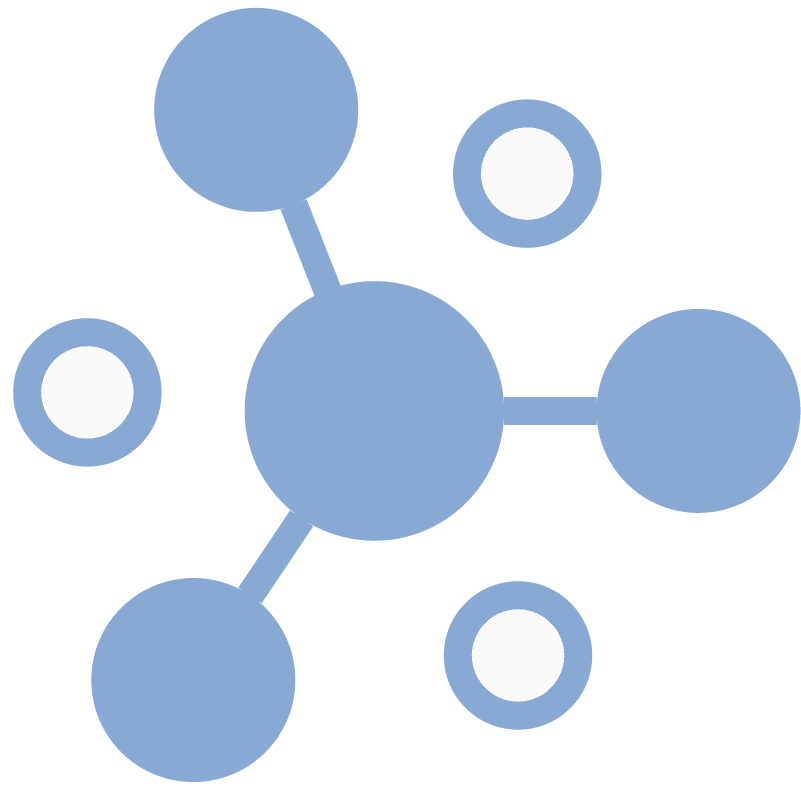Executive Summary: How Instant IT® Business Design Transforms Business Operations
Instant IT® Business Design is a visual language for diagramming operational business processes and the work they do. Here is a summary of the business design process.

![]()
![]() Establish Business Strategy and Goals Any business transformation begins with establishing the strategic goals and objectives for the transformation effort. These need to identify measurable results, metrics, and outcomes to be used to determine the success of the transformation effort.
Establish Business Strategy and Goals Any business transformation begins with establishing the strategic goals and objectives for the transformation effort. These need to identify measurable results, metrics, and outcomes to be used to determine the success of the transformation effort.

![]()
![]() Reinvent Processes to Achieve Goals The basic question behind a business transformation is “How will we need to operate to achieve our transformation goals?” Moving to a new standard operating procedure that is highly accelerated and (possibly) automated requires rethinking business processes.
Reinvent Processes to Achieve Goals The basic question behind a business transformation is “How will we need to operate to achieve our transformation goals?” Moving to a new standard operating procedure that is highly accelerated and (possibly) automated requires rethinking business processes.

![]()
![]() Design Operational Work Accelerated and automated business processes require new ways of organizing work. Designing work the way it needs to be done transforms and automates processes better than purchased solutions that dictate how work is to be done.
Design Operational Work Accelerated and automated business processes require new ways of organizing work. Designing work the way it needs to be done transforms and automates processes better than purchased solutions that dictate how work is to be done.

![]()
![]() Implement Transformed Workflows Transformed work processes need applications and systems to support them, otherwise their success will be undermined. Transformations require well-thought-out designs of operational work and business processes, with IT automation that enables them instantly.
Implement Transformed Workflows Transformed work processes need applications and systems to support them, otherwise their success will be undermined. Transformations require well-thought-out designs of operational work and business processes, with IT automation that enables them instantly.
Instant IT not only captures unique operations and work structures, it generates complete, ready-to-use applications for transformed business operations instantly.
For those interested in a more detailed description of Instant IT® Business Design, keep reading or click on an item in the menu at the left to select a specific topic.
Instant IT® Business Design Is A Platform For Managing Enterprise Operations
InfoNovus’s patented technology is used to design business processes and operational work, which are the essential elements of digital and business transformation efforts. A business design is also used to automatically generate a ready-to-use custom application to support a company’s goals for its transformation.
Business design is a method used for mapping out exactly how a company will operate to achieve its goals and objectives. Traditional management tools like organization charts and MBO plans address the people aspect of company operations; however, the process for defining and organizing work activities is typically fragmented between business units and departments, creating gaps and redundancies in cross-functional processes.
Further, work activities, along with the gaps and redundancies, become inflexible once they are locked into an IT application such as those that support enterprise resource planning, customer service, or supply chain and logistics management. Because these applications are hand-crafted by programmers, changing them is costly and time-consuming.
Business agility requires the ability to adjust the way business activities are to be performed when market shifts occur, then generate—not program—the needed applications directly from the business design. Agility is an essential component of a company’s enterprise strategy; business design of operational work, information management, and technology use is central to an agile business.
Figure 1 presents how enterprise business operations can be managed with InfoNovus Instant IT® Business Design.

Figure 1: The InfoNovus process for managing enterprise business operations
InfoNovus is reinventing IT and how it works by using instant IT® Business Design and computer-generated applications to remove legacy IT obstacles to business transformation and agility.
An Overview of Instant IT® Business Design
The Instant IT® Business Design process transforms, accelerates, and unifies development of transformed business operations and the software applications that support them. InfoNovus Business Design completely aligns IT with the business and its operations to apply the exact technology and automation the business needs. This process describes operational elements in business terms, not in IT terms.
InfoNovus Business Design captures every element of a company’s design as digital business metadata. This allows elements of a business design to be reused, validated, and shared. It also creates a system for management, control, and governance.
Organization and Goals
No two companies, even in the same industry, organize operations and responsibilities in exactly the same way. Instant IT® Business Design has each customer enter their organization chart. This is important because a business process and its operational workflow allocates work to different organizational units based on their responsibilities. The effort to modify purchased software applications is often driven by a unit’s particular responsibilities and way of working.
A company can also establish business goals and the operational and performance metrics that will measure achievement. As shown in Figure 1 above, the strategy and goals the business sets initiate the process for transforming each operation of a company.
Business Processes and Workflows
Work, even in widely distributed and independent operations, is organized as a process described in part with workflow charts. Digital operations that are data- and event-driven still require actions to take place in a sequence. Companies in regulated industries are seeing more regulations that expect work processes to ensure regulatory compliance.
Instant IT® Business Design allows customers to specify their processes and workflows, regardless of their uniqueness, taking regulations into account. A process workflow design includes:
- its distinct process actions;
- the type of each process action (manual, person-computer interactive, or computer-only);
- the organization responsible for performing the process action; and
- other aspects important to understand about the process workflow.
Figure 2 presents an example of a process workflow:

Figure 2: A process workflow example
Operational Actions and User Interfaces
Process actions are the operational steps taken to do the work of the process workflow. Each process action needs to describe a complete, stand-alone action.
- For a manual process action, this is a procedural description or diagram guiding the individual who performs the action.
- For a person-computer interactive process action, this is a diagram and description of the webpages a person interacts with to perform the action.
- For a computer-only process action, it identifies the events or schedules that trigger it.
Figure 3 presents an example of a process action design:

Figure 3: A process action example (apologies for the fuzziness – ask our Founder what this diagram taught him about IT-business alignment)
Instant IT® Business Design helps companies specify the way each process action will work.
InfoNovus learned during the development of Instant IT that user acceptance of an application often depends on having process actions operate as they, not a business designer or software application, want.
This means that the flow of webpages in a process action, webpage formats and behavior of elements in webpages, and other operational characteristics are important to the success of a business transformation and its supporting applications. InfoNovus Business Design has been developed to allow this operational flexibility.
Use Cases
Process workflows provide a high-level view of how a business operates. Process actions provide a more detailed view of operational work done. Use cases look at the operating scenarios that utilize a business process. For example, a small transaction or order may be handled differently than a very large one. Extra process actions to review and approve a large transaction or order may be required. These reviews and approvals are in the process workflow, of course, as are the actions. A use case describes how the actual flow of work for small and large transactions or orders will operate.
Each use case scenario and sub-scenario identifies the process actions and, where applicable, webpages that are engaged by the use case. Use cases map work to a business process and its process actions. Use cases also provide the basis for Instant IT® test automation.
Data and Rules
A major source of problems in legacy IT is duplicate, out-of-synch, inconsistent data and rules. Instant IT® Business Design eliminates this issue by enforcing consistency. For data, this means wherever a data element is used it will have a format, definition, and conformance with applicable rules consistent throughout the entire business design. Rules will be the same wherever they are used. In software engineering terms, this means there is always a ‘single point of truth’ for each datum and rule.
Business Design Validation
Because Instant IT® Business Design captures the above, and more, as digital business metadata, InfoNovus Business Design can provide features that legacy IT cannot. One feature is the validation of a business design that determines whether the business design is complete and consistent. Complete means the information for each design element has been captured. Consistent means the use of a design element makes sense for the entire design.
Instant IT® Business Design validation is important because if a business design is incomplete or inconsistent, a working software application cannot be generated.
The Instant IT® Business Design Methodology
InfoNovus Technologies replaces legacy IT software development with Instant IT® Business Design where the business and how it needs to operate is the central focus. InfoNovus Business Design also provides unparalleled rigor in designing operational business processes, process actions, UI formats, data, rules, and use cases — all of which are needed for rigorous operational business requirements.
InfoNovus has reinvented the legacy IT systems development life cycle. Rather than the classic requirements-architecture-design-and-develop process, whether waterfall or agile, Instant IT® Business Design methodology is completely driven by company goals and operations, as shown in Figure 4.

Figure 4: The Instant IT® Business Design Methodology
InfoNovus Instant IT® Business Design begins with business goals, which drive how operational processes and workflows must be designed. Instant IT® captures processes, workflows, data, rules, user interfaces, and more as digital business metadata that fully describes the organizational and operational aspects of the business. This digital business metadata is used for automation of application development that utilizes consistent data and rules.
Instant IT® Business Design Solves IT’s Business Requirements Problem
Of all the issues associated with legacy IT project development and management, problems with business requirements definition ranks at the top of the list. Eliciting complete and specific business requirements has been the most challenging aspect of delivering effective applications.
“Poor requirements practices alone can doom any application development initiative. No matter how well architected, well-constructed, or well-tested an application might be, it is essentially useless if it fails to meet business needs.” (www.cio.com)
The typical process for defining business requirements uses Word or Excel to document the operational capabilities the business needs application software to support. All technical artifacts such as the system architecture, database schema, and program specifications are ‘translated’ from Word or Excel descriptions of these operational capabilities to comply with artifacts specific to each technical discipline. The problem becomes one of multiple translations, each technical discipline concerned about its own domain and what its technologies require more than the business itself.
The result has been that legacy IT providers and supporters attend to their technical interests over and above the operational needs of the business. This is most clear when operational leaders and managers are asked to review and approve the documented business requirements. They are expected to approve functional capabilities of planned software with only limited organizational, operational, or workflow context. These are the elements that cause the greatest problems with custom-built or purchased applications.
"A proven, effective, real world approach to Business Requirements Analysis is one of the most significant factors in ensuring the success of any system development project.” (Gartner)
This is especially true when business needs speed, agility, and the ability to experiment to survive in an ever-changing digital world of business.